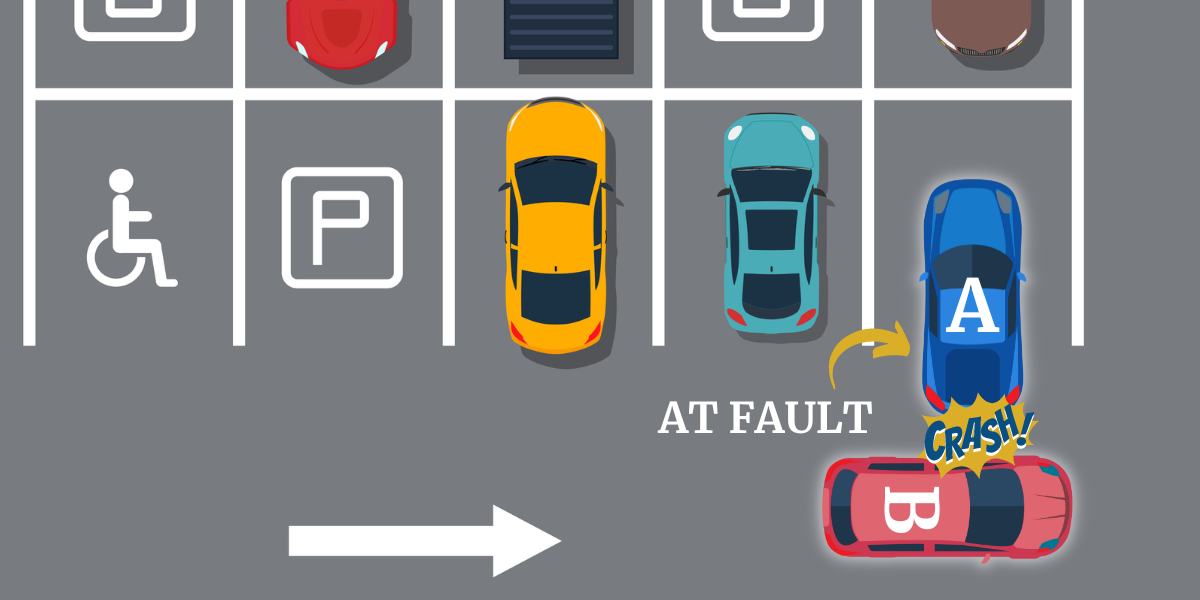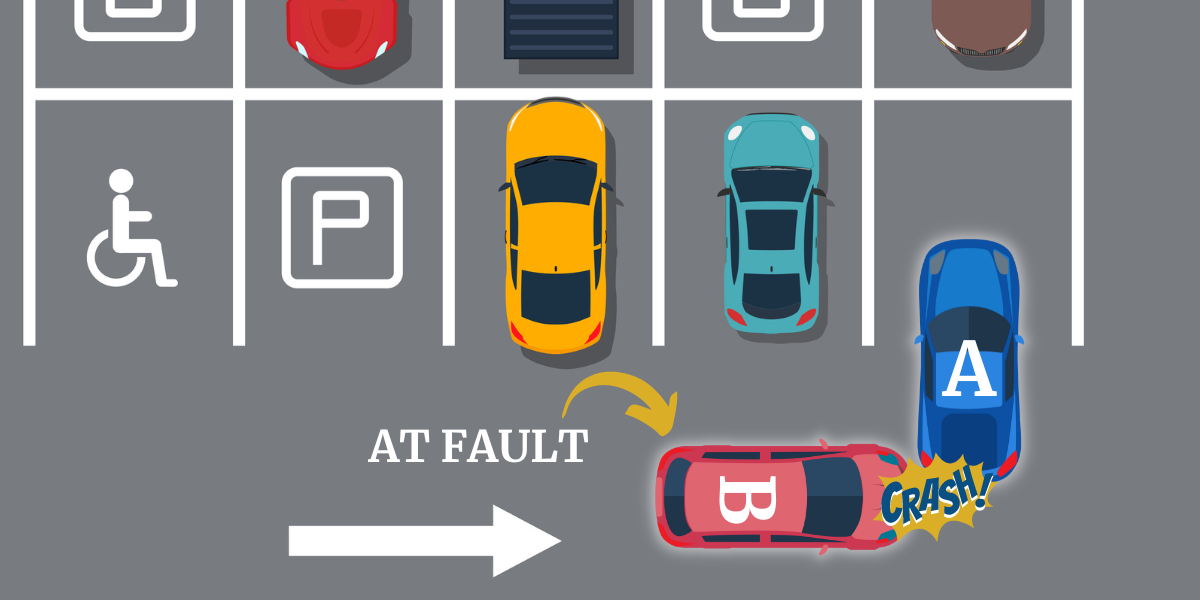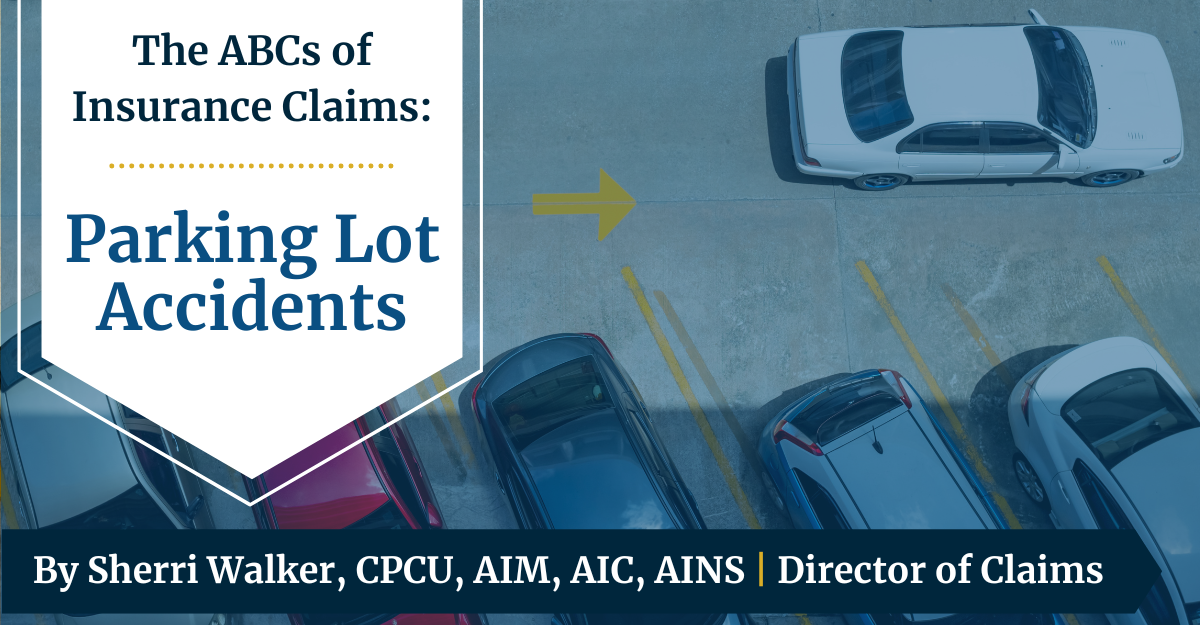Welcome to the ABCs of Insurance Claims. Over the next few months, Sherri Walker, Sentinel’s Director of Claims will address an aspect of claims handling for every letter of the alphabet to help provide a better understanding of the claims process.
Parking Lot Accidents
Ah, it’s that time of year. The air has turned brisk and twinkling lights are being hung in trees and on houses. It’s time to brave the crowds and head out to score on the holiday deals. You slog through the mall, carrying a heap of packages and bags, and head out to the danger zone, a.k.a. the parking lot, piling everything in your car. As you begin to back out of your spot, you feel a thud and hear the dreaded crunch of metal. Welcome to the letter P, where we will discuss Parking Lot Accidents.
Parking lots are just inherently a recipe for minor dings and bump ups. Traffic is moving forward, backward, and perpendicular, and as hard as we try, there are angles we just can’t see well. Backup cameras are much more commonplace, and they definitely help, but along with that technology comes a more lackadaisical approach to actually turning to look behind us. It’s all too easy to back into something just out of range of that camera without even knowing it’s there.
Claims - Point of Impact
So, what does this mean in the world of claims? It’s important to realize that a vehicle while backing has the duty to confirm that they can safely complete that movement before even starting. That being said, that doesn’t mean that the backing car is automatically 100% responsible every time. When investigating parking lot accidents, adjusters often rely on the “Point of Impact” to help determine who is at fault.
For example, assume Car A is backing up and Car B is in the travel lane. If Car A hits the door of Car B, Car B was far enough through the lane that Car A should have known they were there.

However, if Car A is almost completely out of the space and the rear bumper connects with the front bumper of Car B, then Car B may actually be at fault for not seeing that Car A was already backing and mostly out. In essence, we can’t always say that the backing car is 100% at fault.

What if both cars are backing? This one is tricky. As an adjuster, I would rather have a 5-car pileup on a highway to sort out than an accident where two caffeine deprived drivers in the Starbucks parking lot backed into each other in the middle of the lane. Inevitably both drivers will swear that they were all the way out and that they had stopped and laid on their horn just prior to the accident.
The laws of physics tell us that two cars that are both stopped will not collide. It also confirms that two cars that are each 6 feet long will not both fit across a travel lane that is 9 wide if both were completely out of their parking space. This is where Recorded Statements (refer back to Just the Facts if you’d like more on that subject) come into play, and if we are lucky, a witness.
While laws regarding who is “at fault” for an accident can vary from state to state, there is one universal truth – not every accident is only one person’s fault. In many parking lot accidents, there’s just not a way confirm who is 100% responsible. If you have an accident and don’t believe that it’s your fault but the other party’s insurance denies your claim, you may still have recourse.
In this event, you do have the option to file the claim with your own policy and allow your carrier to investigate the accident on your behalf. If your adjuster also feels that the other party is responsible, they will be able to engage in arbitration with the opposing party’s insurance, and a final determination can be made.
Tips and Things to Know
So, if you are in an accident in a parking lot, what should you know? Just like any accident, you should stay calm, and first contact law enforcement. If you are in a safe area and not obstructing traffic, try to get a photo of the cars before they are moved. If it is not safe or you are obstructing traffic, then it’s ok to pull back into your parking space.
Depending on what type of parking lot you’re in, there may be cameras that caught the accident on tape, so make note of the stores immediately around you and provide that information to your insurance carrier. If anyone were standing in the immediate area when the accident happened, ask if they would consider being a witness. Their information will be added to the crash report so that the adjuster is able to get their statements as well.
One other area of concern in parking lots is medians, light posts and landscaping features such as boulders and shrubs. Remember that these fixtures can be low to the ground and harder to see, but they do serve a purpose. As you navigate your way around these things, take care. If you do end up striking or scrubbing one of these items, unfortunately that is an at fault accident and the insurance carrier for the business or parking lot owner will not pay for the damages to your auto.
Safeguarding Your Success
This season, as you tend to the multitude of errands that come with the holidays, remember to take the time to check your surroundings and back with care. If you do find yourself in a bump up, our Sentinel Claims Team will help ensure your claim goes as smooth as a freshly poured parking lot!


